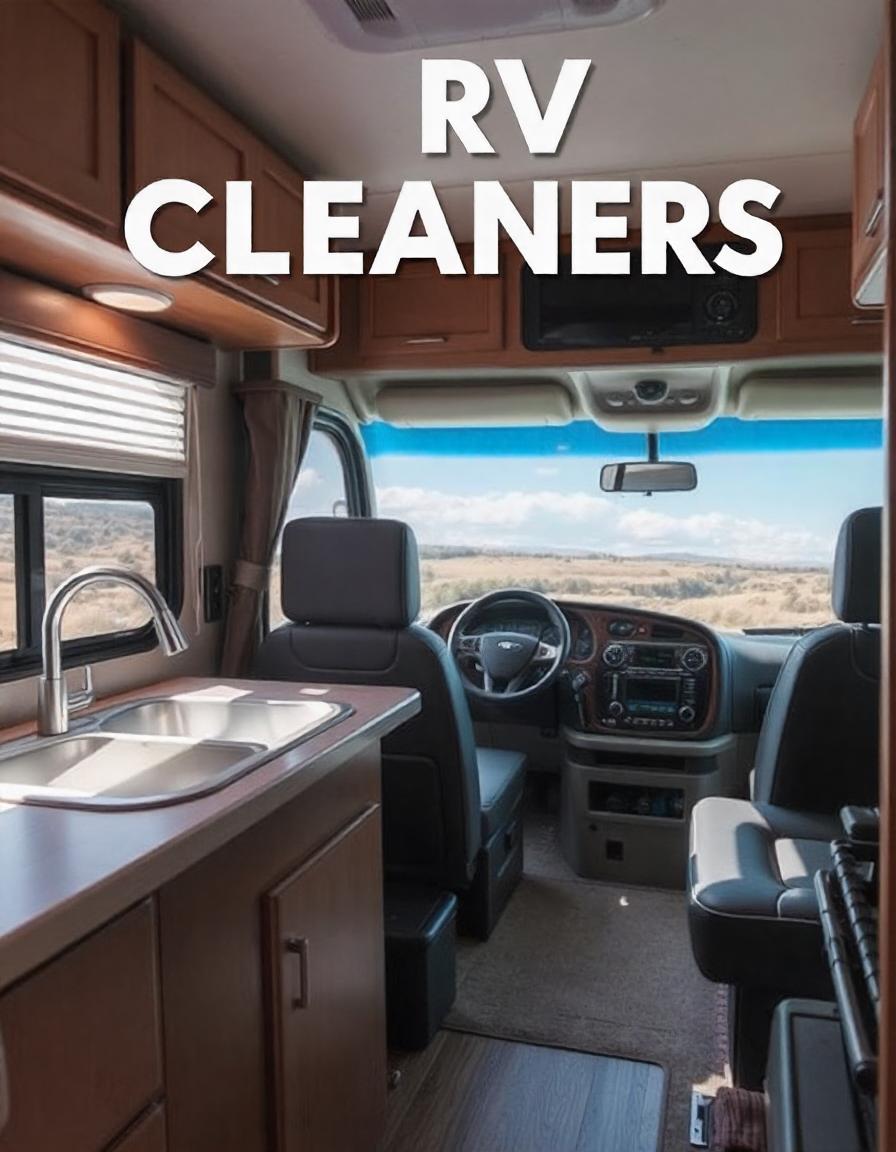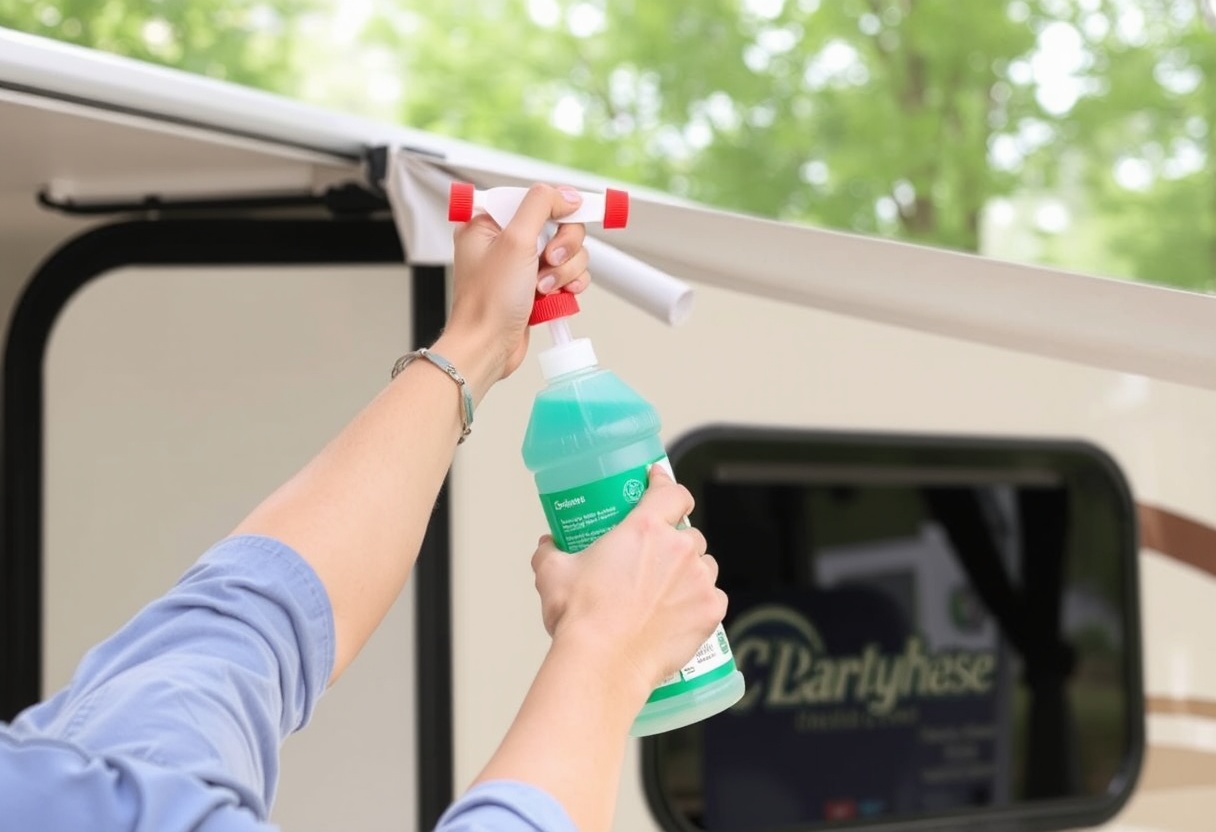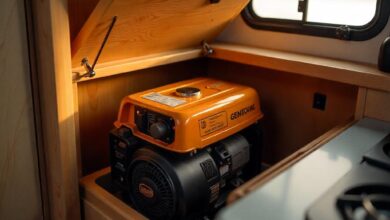How to Winterize an RV: The Complete Guide for a Safe Winter Season

Table of Contents
Introduction of How to Winterize an RV?
Winterizing an RV is one of the important tasks for any person who will store the RV in cold climate. When temperatures drop your pipes can freeze, leave you battling with damaged plumbing and mechanized systems within your RV when not well prepared for the winter conditions. Winterizing RV is the process of making part of RV inaccessible to danger that comes with the winter season so that they can retain their functionality and functionality in the winter season.
Why is this important? The plumbing system and the electrical components in the RV together with the outer part of the RV are sensitive to cold weather. Water in the pipes actually turn into ice and this turns out to be very damaging as it puts pressure on the pipes and the fittings if these pipes do not have to be drained or insulated they are likely to burst. Likewise, external façade and building material also lose their stability and strength if they come in contact with moisture and freezings for some time. This sort of damages is not only costly to be repaired but also reduces the durability of your RV.
To ensure a successful winterization, focus on four main areas:
- Plumbing System: Removing and isolating water -supplying pipes and tanks from the source has the added dimension of avoiding frozen lines.
- Exterior Protection: There is nothing as applying covers and insulation such as windows in order to prevent your RV from being affected by the harsh winter season.
- Electrical System: Batteries and connections must be well protected because of the problems with freezing and corrosion.
- Storage Preparation: To winterize an RV it should first be protected and preparing the RV properly makes de-winterizing in the spring easier regardless of if the RV is stored indoors or out.
This should not be misunderstood as applying protection techniques to your RV for you to avoid making expensive repairs in the future, but is actually a way in which you make an investment to the life span and performance of your RV. By doing so, one ensures that when it comes to the sunshine season, no a lot of money will be spent, and again a lot of time and energy are not used.
RV Winterization Checklist
Making an RV winter preparation checklist as a starting point is also quite helpful in order to make a comprehensive list. Here is the list of tools and equipment you might need together with possible division of works:
Essential Tools and Supplies
Gathering the necessary tools and supplies in advance will streamline the process and reduce the risk of missing steps. Here’s what you’ll need:
- RV Antifreeze: Somewhat more dedicated to the kinds of plumbing in your RV, this is one of the most basic supplies you should have. It is environmentally friendly since it is non toxic with potable water systems.
- Wrenches and Screwdrivers: These will be necessary to shut off clamps and loosen and reconnect hoses; remove access panels as needed, and to tighten or loosen nuts at specific points with most intensity.
- Air Compressor (Optional): In case you do not like using antifreeze, simple use of the air compressor with a blow-out plug adaptor will blow out the water lines.
- Water Pump Converter Kit or Siphon Hose: One very helpful feature of this tool is that it helps to draw the antifreeze into the water lines because it does not require turning the water supply on and filling the pipes individually.
- RV Water Heater Bypass Kit: This bypass kit helps avoid entry of antifreeze into the water heater thus saving time for the process and antifreeze as well.
- Pipe Insulation or Skirting (for Exterior): Some of the measures help to maintain your RV from extreme temperatures include covering pipes and any other exposed parts of the unit.
- RV Cover: It is important for the exteriors to be shielded by a quality RV cover as paint, seals and other external part can easily be damaged.
RV Winterization Checklist
Here’s a step-by-step checklist to help you through the winterization process:
- Drain Freshwater, Greywater, and Blackwater Tanks: Begin by emptying all tanks completely. This prevents water from freezing and causing cracks in tanks or pipes.
- Drain the Water Heater: After turning off power to the heater, drain it by removing the drain plug. This step is vital, as any remaining water could expand and damage the water heater.
- Bypass the Water Heater: Use a bypass kit to ensure that antifreeze doesn’t enter the water heater tank, which helps conserve antifreeze.
- Drain Interior Water Lines: Open all faucets and shower heads to allow any remaining water to drain. This step reduces the risk of trapped water freezing and damaging pipes.
- Use an Air Compressor or Add Antifreeze to Water Lines: If using an air compressor, blow out remaining water in the lines. Alternatively, pump RV antifreeze into the water system to prevent freezing.
- Fill P-Traps with Antifreeze: Pour a small amount of antifreeze into each sink and shower drain to protect the P-traps from freezing.
- Flush Toilets and Add Antifreeze: To protect the toilet seals and black tank, flush antifreeze through the toilet until it enters the tank.
- Disconnect and Store the Battery: If storing your RV outdoors, disconnect the battery to prevent draining and protect it from cold weather.
- Cover the RV Exterior: Place an RV cover over the entire vehicle to shield it from moisture, debris, and freezing temperatures.
- Inspect Roof Vents, Windows, and Seals: Ensure all vents and windows are properly sealed to prevent moisture from entering and damaging the interior.
Tips for Using the Checklist
- Double-Check Each Task: Go through the checklist twice to confirm each step is completed, especially when dealing with plumbing.
- Label the Date of Winterization: Attach a note in the RV indicating the date you winterized it, so you’ll know exactly how long it’s been protected.
- Consult the RV Manual: Each RV may have specific winterization requirements; refer to the manual for model-specific guidance.
Step-by-Step Guide to Winterize an RV
Winterizing your RV is essential for protecting your investment and ensuring it’s ready for spring. Let’s dive into each step of the winterization process:
Draining Water Tanks
Before adding antifreeze or protecting the plumbing, it’s crucial to drain all water from your RV’s tanks.
Steps to Drain Water Tanks:
| Step | Action | Details |
| 1 | Drain Fresh Water Tank | Open the drain valve and let all water flow out completely. |
| 2 | Drain Grey and Black Water Tanks | Empty both tanks at a dump station. Rinse the black tank to remove any remaining waste. |
| 3 | Open Low-Point Drains | Locate the low-point drains, usually two hoses under the RV. Open them to drain remaining water. |
| 4 | Close Valves | Once tanks are empty, close all valves to prepare for the antifreeze step. |
Adding RV Antifreeze
After draining the water, adding antifreeze ensures that any remaining water doesn’t freeze and damage the plumbing.
Steps to Add RV Antifreeze:
| Step | Action | Details |
| 1 | Bypass Water Heater | Set up the water heater bypass valve (if installed) to avoid filling it with antifreeze. |
| 2 | Connect Antifreeze to Water Pump | Use a pump converter kit to connect antifreeze to the RV’s water pump. |
| 3 | Turn on Faucets | Open each faucet (hot and cold) one by one until you see pink antifreeze flowing through. |
| 4 | Flush Toilets and Shower | Ensure antifreeze flows through the toilet, shower, and any other water outlet. |
| 5 | Add Antifreeze to Drains | Pour about a cup of antifreeze into each drain to protect P-traps from freezing. |
Pro Tip: Use non-toxic, RV-specific antifreeze to prevent contamination of the water system.
Protecting Plumbing
Protecting your plumbing is key to avoiding burst pipes in freezing temperatures.
Steps to Protect Plumbing:
| Step | Action | Details |
| 1 | Insulate Exposed Pipes | Wrap any exposed pipes with foam insulation or heating tape for added protection. |
| 2 | Check Ventilation | Keep a small vent open to prevent moisture build-up inside the RV. |
| 3 | Set Interior Temperature | If storing the RV in extremely cold areas, maintain a low interior temperature with a small heater. |
Winterize RV Water System
Winterizing your RV water system involves draining, protecting, and adding antifreeze, making this a crucial step in the winterization process.
Read Also : Top Service of RV Repair Newport beach : Can You Physically Push in an RV Slide Out?
How to Winterize RV Plumbing?
RV plumbing is particularly vulnerable to freezing. Here’s how to protect it with two common methods: RV antifreeze and air compressor.
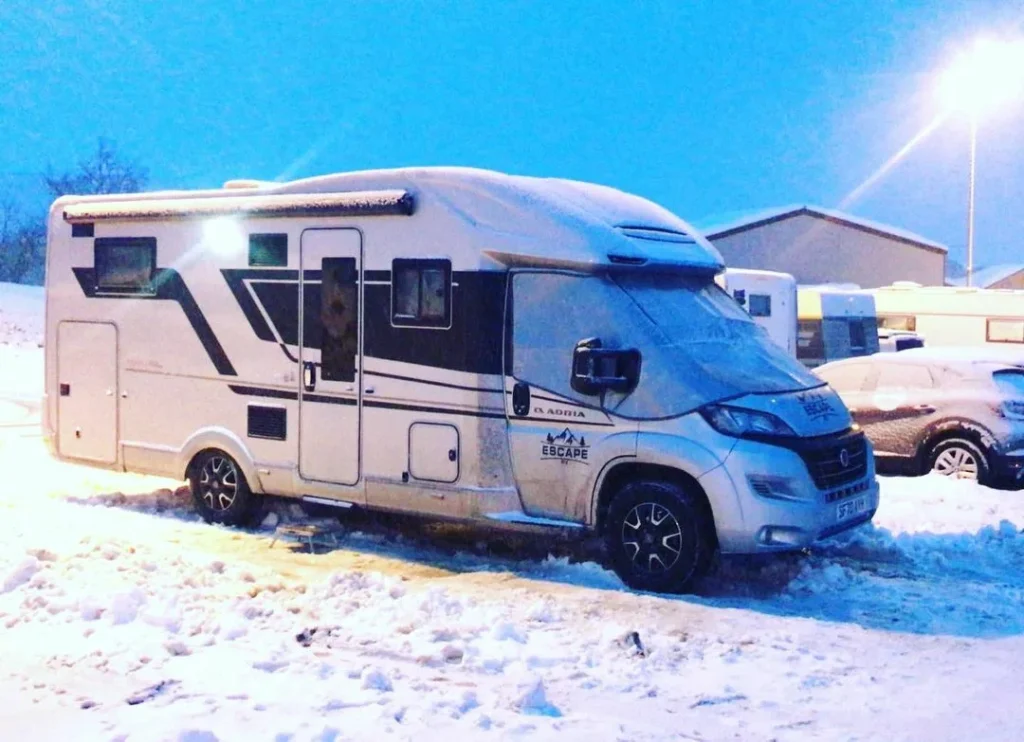
Antifreeze vs. Air Compressor
| Method | Process | Pros | Cons |
| Antifreeze | Add antifreeze to the entire system | Ensures thorough freeze protection | Requires flushing in spring |
| Air Compressor | Blow out water with compressed air | No need to flush in spring | Risk of incomplete water removal |
Tips for Winterizing RV Plumbing
- Use Quality Antifreeze: RV-specific antifreeze prevents damage and is non-toxic.
- Apply Heat Tape on Pipes: For extra protection in extreme temperatures, wrap heat tape around exposed pipes.
- Leave Cabinets Open: This allows warm air to circulate around pipes, helping prevent freezing.
Winterize RV Plumbing
Winterizing your RV plumbing effectively prevents damage during cold months, saving costly repairs.
Winterizing the Water Heater
The RV water heater requires special care. Draining and preparing it for winter protects it from freeze damage.
Steps to Drain RV Water Heater for Winter
| Step | Action | Details |
| 1 | Turn Off Water Heater | Ensure it’s off and cooled before draining. |
| 2 | Open Pressure Relief Valve | Release pressure by opening this valve, usually located at the top. |
| 3 | Remove Drain Plug | Carefully remove the plug to let water drain out completely. |
| 4 | Bypass Water Heater | If your RV has a bypass valve, set it to bypass to prevent antifreeze from entering the heater. |
Common Issues to Avoid
- Leaving Water Inside: Failing to drain fully can cause internal damage.
- Skipping Bypass Valve: Allowing antifreeze into the heater can be hard to remove and may leave residue.
RV Battery and Electrical Systems in Winter
Winter can be harsh on RV batteries and other electrical components. Proper storage and maintenance are key to ensuring they last through the season.
Steps for RV Battery Storage and Protection
| Step | Action | Details |
| 1 | Remove the Battery | Disconnect and remove the battery from the RV if possible to prevent cold damage. |
| 2 | Clean the Battery | Wipe off dirt and corrosion on battery terminals to prevent deterioration. |
| 3 | Charge and Store Properly | Fully charge the battery and store it in a cool, dry place with temperatures above freezing. |
| 4 | Check Monthly | Monitor the battery’s charge level monthly and recharge if it drops below 12.4 volts. |
Winterizing Other Electrical Components
- Disconnect Electrical Cables: Disconnect all electrical cables and ensure they’re stored securely to prevent weather exposure.
- Surge Protectors: If you use a surge protector, remove it from the power source to prevent damage during power surges in winter storms.
- Solar Panels: If your RV has solar panels, check connections, clean the panels, and ensure any exposed wires are protected from moisture.
Storing the RV During Winter
Choosing between indoor and outdoor storage for winter is a big decision. Here’s a comparison of options to help you decide.
Indoor vs. Outdoor Winter Storage Options
| Storage Type | Benefits | Drawbacks |
| Indoor | Protects from elements; keeps RV warmer | More expensive; requires finding space |
| Outdoor | Affordable and widely available | Exposed to weather, may need extra prep |
Insulation Tips for Outdoor Storage
- Use an RV Cover: Choose a high-quality, breathable cover to protect from snow, wind, and moisture.
- RV Skirting: Skirting around the RV base provides added insulation, blocking cold air and reducing heat loss.
- Tire Protection: Cover the tires to prevent them from cracking due to freezing temperatures.
Additional Tips for Winterizing an RV
Winterizing doesn’t just mean protecting the exterior and plumbing. The RV interior also needs attention.
- Insulate Windows: Apply thermal film or insulating curtains to keep the RV warmer.
- Prevent Moisture Buildup: Use moisture absorbers or a dehumidifier to avoid mold or mildew inside.
- Remove Food and Clean Thoroughly: Clear out all perishable items, empty trash bins, and give the interior a deep clean to deter pests.
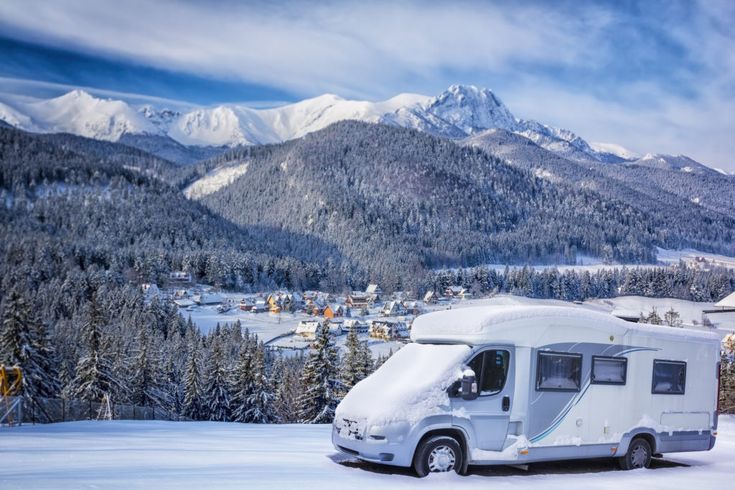
Common RV Winterization Mistakes to Avoid
Avoiding common mistakes can save costly repairs in the spring. Here are a few pitfalls to watch for:
| Mistake | Solution |
| Skipping Antifreeze | Always add non-toxic RV antifreeze to plumbing to prevent freezing and bursting pipes. |
| Overlooking Battery Maintenance | Remove and charge the battery monthly; neglecting it can reduce battery life significantly. |
| Not Draining Water Heater | Drain and bypass the water heater to avoid freezing damage. |
| Leaving Vent Openings Unsealed | Cover vents and use rodent screens to prevent animals from entering during winter storage. |
RV Winterization Service Cost and DIY vs. Professional Winterization
The cost of winterizing an RV can vary depending on location and service providers.
Average Winterization Service Costs
| Service Type | Cost Range |
| DIY Supplies | $20 – $100 |
| Professional Service | $100 – $300+ |
DIY vs. Professional Winterization: Pros and Cons
| Approach | Pros | Cons |
| DIY | Cost-effective; flexible timing | Requires time and knowledge |
| Professional | Quick and convenient; thorough inspection | Costs more; may require appointment |
FAQs on Winterizing an RV
Q1: How much antifreeze is needed?
A: You’ll typically need between 2-3 gallons of RV-specific antifreeze, depending on the size and type of your RV.
Q2: At what temperature should you winterize an RV?
A: Winterize your RV when temperatures consistently drop below 32°F (0°C).
Q3: Can you use regular antifreeze for RVs?
A: No, always use RV-specific, non-toxic antifreeze. Automotive antifreeze is toxic and unsuitable for water systems.
Conclusion
Proper winterization ensures your RV remains in excellent condition through the cold months, preventing costly repairs. By preparing every part—from the water system and plumbing to the battery and interior—you’ll make spring de-winterizing a breeze, allowing you to hit the road with ease and confidence.

